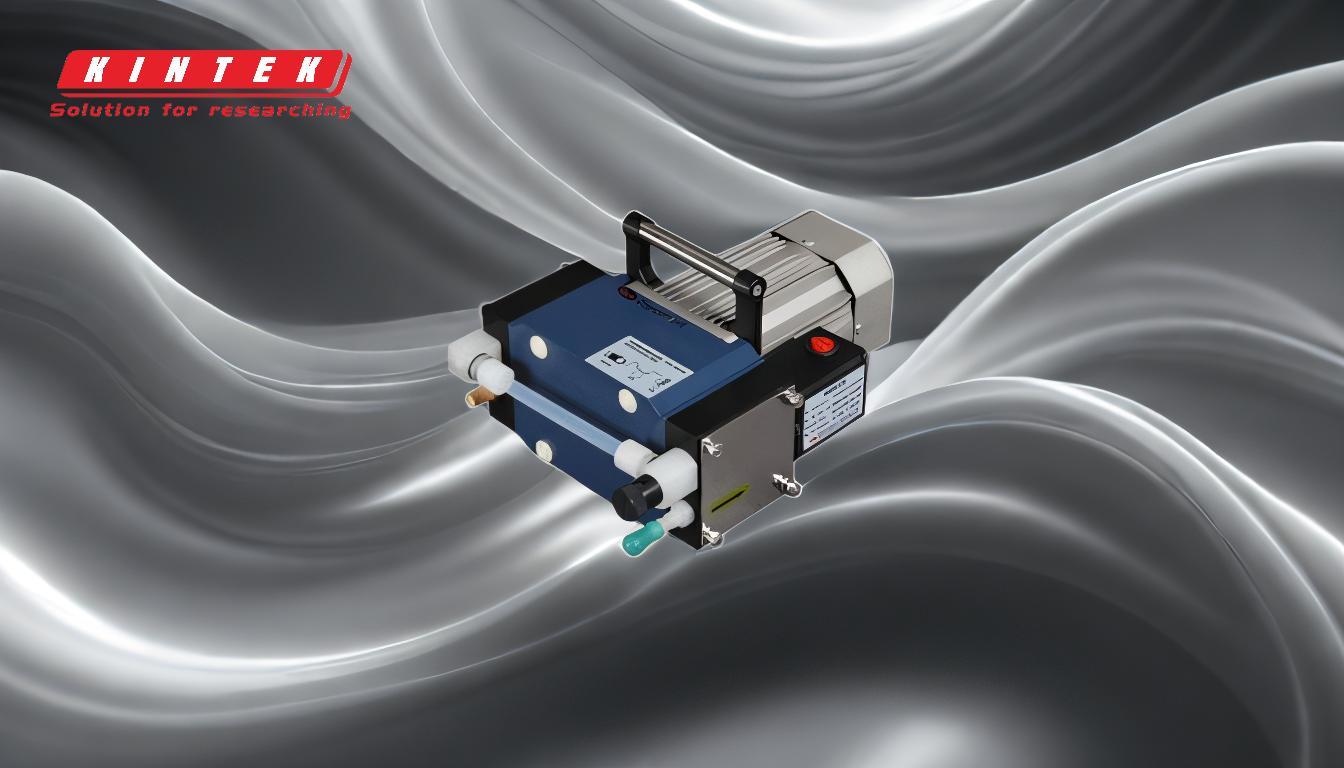The vacuum level of a vacuum pump refers to the degree of vacuum it can achieve, typically measured in units like Torr or Pascal. It is a critical parameter that determines the pump's suitability for specific applications, such as laboratory tasks, industrial processes, or scientific research. The vacuum level is influenced by factors like the pump's design, technology, and operational conditions. For instance, a standard vacuum pump might achieve an ultimate vacuum of 10^-2 Torr, while more advanced systems like vortex molecular pumps can reach 10^-5 Torr. Understanding the required vacuum level is essential for selecting the right pump, as it directly impacts performance, efficiency, and compatibility with the intended application.
Key Points Explained:

-
Definition of Vacuum Level:
- The vacuum level refers to the pressure level a vacuum pump can achieve, measured in units like Torr or Pascal.
- It indicates how effectively the pump can remove gas molecules from a system, creating a low-pressure environment.
-
Factors Influencing Vacuum Level:
- Pump Design and Technology: Different types of pumps (e.g., rotary vane, diaphragm, molecular) have varying capabilities in achieving specific vacuum levels.
- Operational Conditions: Factors like temperature, gas composition, and system volume can affect the achievable vacuum level.
- Application Requirements: The desired vacuum level depends on the specific task, such as solvent evaporation, degassing, or high-vacuum experiments.
-
Examples of Vacuum Levels:
- A standard vacuum pump might achieve an ultimate vacuum of 10^-2 Torr, suitable for general laboratory applications.
- Advanced systems like vortex molecular pumps can achieve much higher vacuum levels, such as 10^-5 Torr, ideal for high-vacuum or ultra-high-vacuum applications.
-
Importance of Vacuum Level in Pump Selection:
- Application Compatibility: The vacuum level must align with the requirements of the task. For example, solvent evaporation may require a moderate vacuum, while semiconductor manufacturing demands ultra-high vacuum.
- Performance and Efficiency: Selecting a pump with the appropriate vacuum level ensures optimal performance and avoids over- or under-specification.
- Cost Considerations: Higher vacuum levels often require more advanced and expensive equipment, so balancing performance and budget is crucial.
-
Additional Considerations for Pump Selection:
- Flow Rate: The pump's ability to move gas at a specific rate, which must match the system's requirements.
- Chemical Compatibility: The pump must be resistant to the gases or vapors it will handle, especially in corrosive or reactive environments.
- Maintenance and Lifespan: The ease of maintenance and expected operational life of the pump are important for long-term reliability.
- Noise and Size: Practical factors like noise level, physical size, and weight may influence the choice of pump.
-
Practical Applications and Examples:
- Laboratory Use: Vacuum pumps are used for tasks like filtration, degassing, and freeze-drying, where specific vacuum levels are required.
- Industrial Processes: Applications include vacuum packaging, material handling, and semiconductor manufacturing, each with unique vacuum requirements.
- Scientific Research: High-vacuum and ultra-high-vacuum systems are essential for experiments in physics, chemistry, and materials science.
-
Key Takeaways:
- The vacuum level is a critical parameter that determines a pump's suitability for specific tasks.
- Understanding the required vacuum level, along with other factors like flow rate and chemical compatibility, is essential for selecting the right pump.
- Advanced pumps like vortex molecular pumps can achieve higher vacuum levels, making them suitable for specialized applications.
By carefully considering these factors, you can select a vacuum pump that meets your specific needs, ensuring optimal performance and efficiency in your application.
Summary Table:
| Aspect | Details |
|---|---|
| Definition | Pressure level a vacuum pump can achieve, measured in Torr or Pascal. |
| Key Factors | Pump design, operational conditions, and application requirements. |
| Examples | Standard pump: 10^-2 Torr; Advanced systems: 10^-5 Torr. |
| Importance | Ensures compatibility, performance, and cost-efficiency for specific tasks. |
| Applications | Lab filtration, industrial vacuum packaging, and scientific research. |
Need help selecting the right vacuum pump for your application? Contact our experts today!










